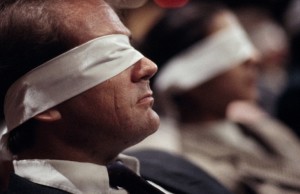 Just like a few good dates with an attractive person of interest can lead to a bad relationship, a good series of interviews with a talented job candidate can lead to a bad hire. The common thread linking these relationship mishaps is our cultural obsession with assessment. Dating site eHarmony tests compatibility using its proprietary 29 DIMENSIONS, Chemistry.com uses a system called the Chemistry Profile, and in my field — hiring — companies apply tools like Wonderlic, the DISC and the Rembrandt Portrait.
Just like a few good dates with an attractive person of interest can lead to a bad relationship, a good series of interviews with a talented job candidate can lead to a bad hire. The common thread linking these relationship mishaps is our cultural obsession with assessment. Dating site eHarmony tests compatibility using its proprietary 29 DIMENSIONS, Chemistry.com uses a system called the Chemistry Profile, and in my field — hiring — companies apply tools like Wonderlic, the DISC and the Rembrandt Portrait.
Despite these efforts, we all still end up on bad dates and all organizations still make bad hires.
Why do our business leaders make poor hiring choices? Common culprits include:
- Weak interviewing skills
- Inaccurate hiring criteria
- Poor cultural fit
- Dishonest candidates
- Hasty hiring decisions
All of these factors can cause hiring mistakes. However, highly skilled interviewers who avoid these missteps still blunder from time to time. The most attentive business leaders overlook crucial details, even when they’re supported by a rigorous candidate selection process. Professional recruiters will mismatch candidates, and they’ve conducted thousands of searches and interviews.
What’s the underlying issue in each of these situations?
It’s called hiring blindness.
Hiring blindness falls into a category of psychological phenomenon called inattentional blindness, which was first identified in the early 1990s by researchers Arien Mack and Irvin Rock. Also known as perceptual blindness, inattentional blindness occurs when an individual fails to recognize an unexpected stimulus that’s right in front of their eyes. This inability to spot critical stimuli is caused by gaps and limits in perception. It’s what allows magicians to manipulate attention to prevent an audience from seeing how a trick is performed. It’s also been identified as the reason drivers fail to notice motorcyclists they hit with their cars.
PREMIUM CONTENT: 2016 U.S. Internal Employee Compensation Estimator
One of the best known examples of inattentional blindness comes from cognitive scientists Christopher Chabris and Daniel Simons. In the late 1990s they created a video that later went viral on the internet. It begins with an offscreen narrator asking viewers to count how many times players wearing white t-shirts pass a basketball to one another. Ten seconds in, a person in a big black gorilla costume walks between the players, faces the camera, thumps its chest, then walks off screen.
The result? Chabris and Simons reported that half the people who watched the video completely missed the gorilla. That’s right. Half of them didn’t see it at all.
To put it simply, people have a tendency to see what they’re looking for, especially when their minds are primed and ready to see specific things. In hiring terms what this means is that you can be blinded by your own expectations. When you set yourself up to see a particular set of stimuli, you run the risk of missing the gorilla even when it walks right past you.
Next week, I’ll address how different leadership styles further complicate the situation, and how to mitigate their impact.
MORE: Internet killed the recruiting rock star








